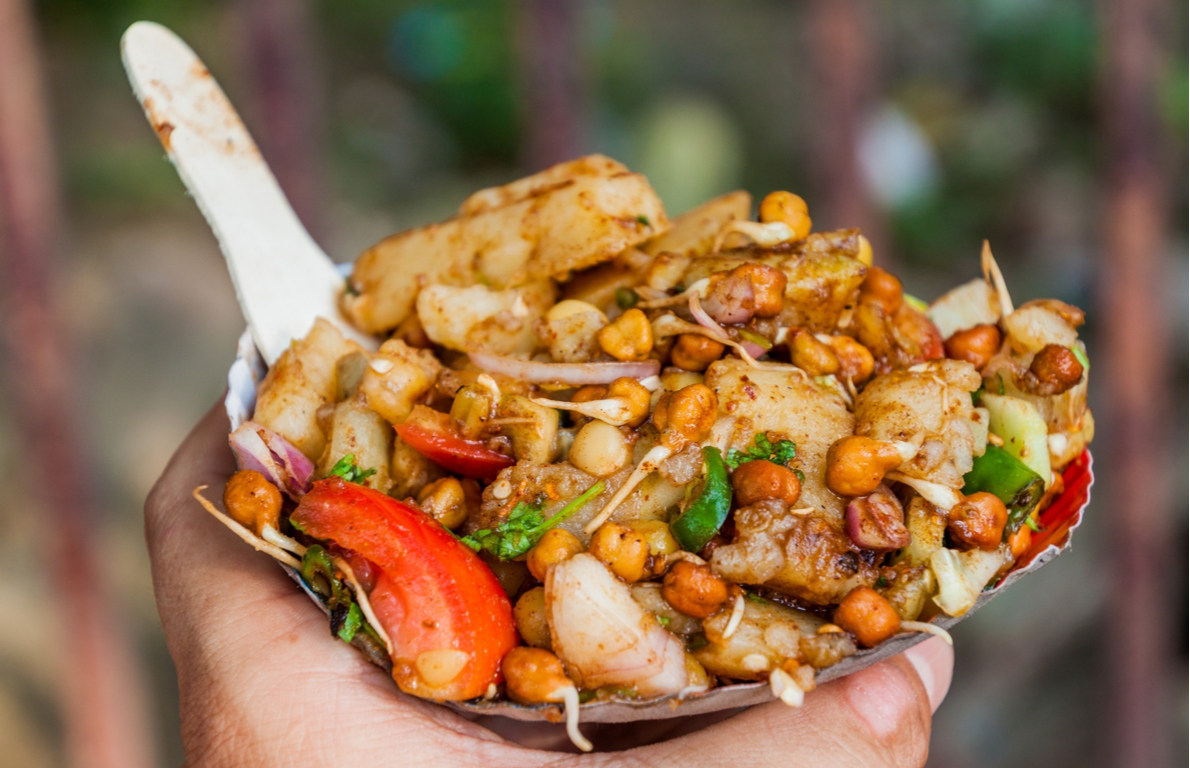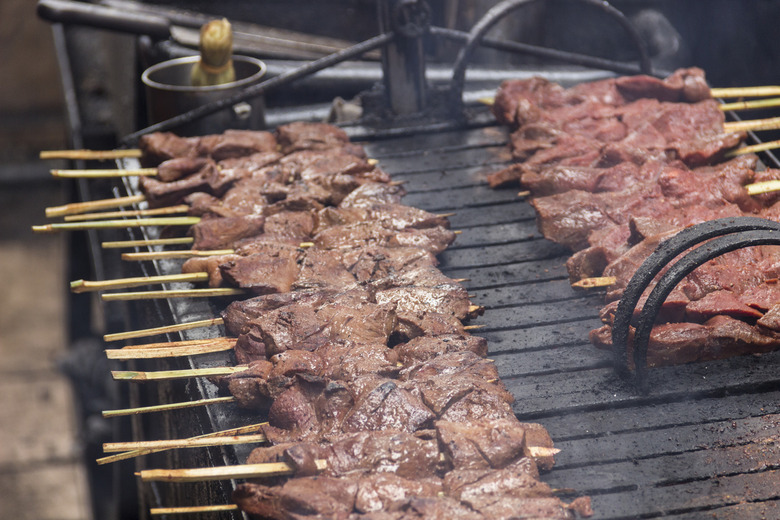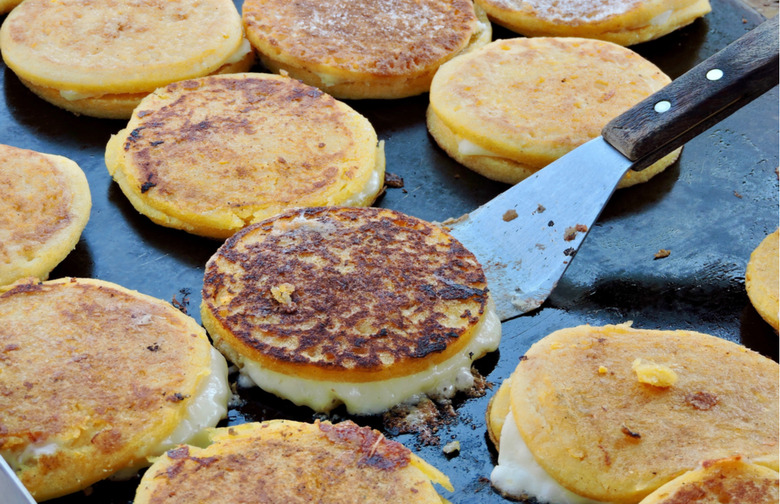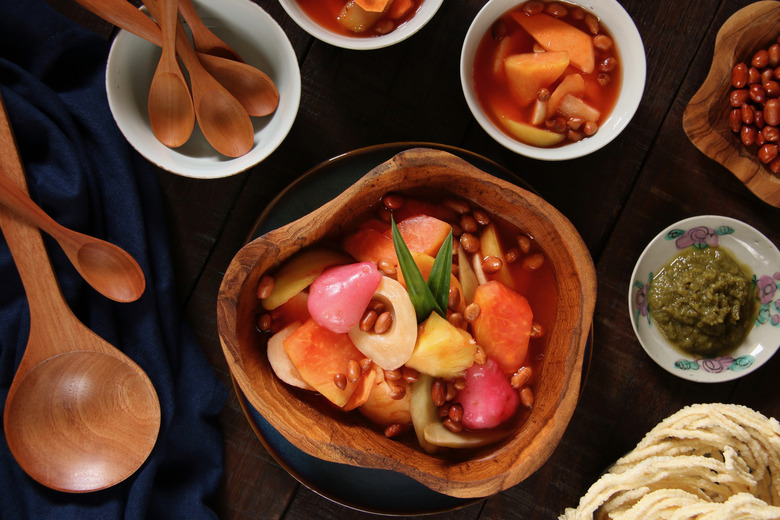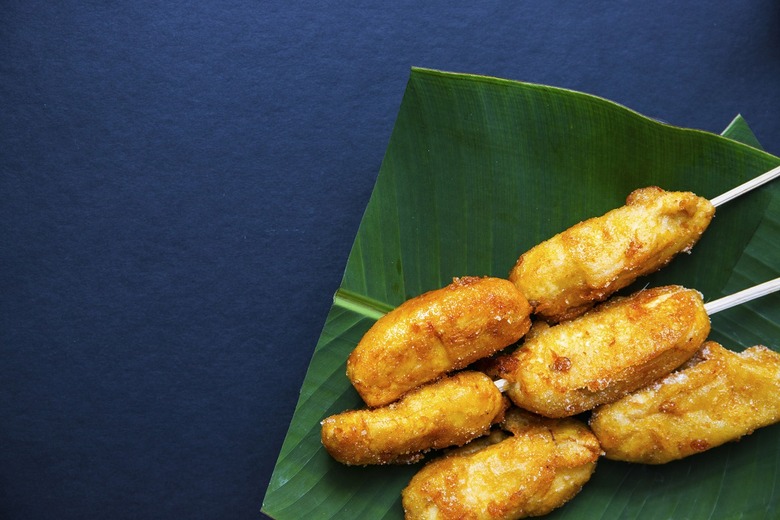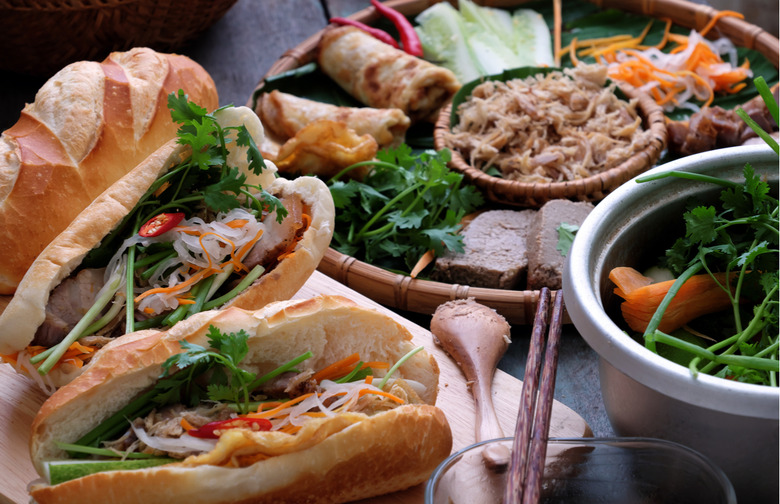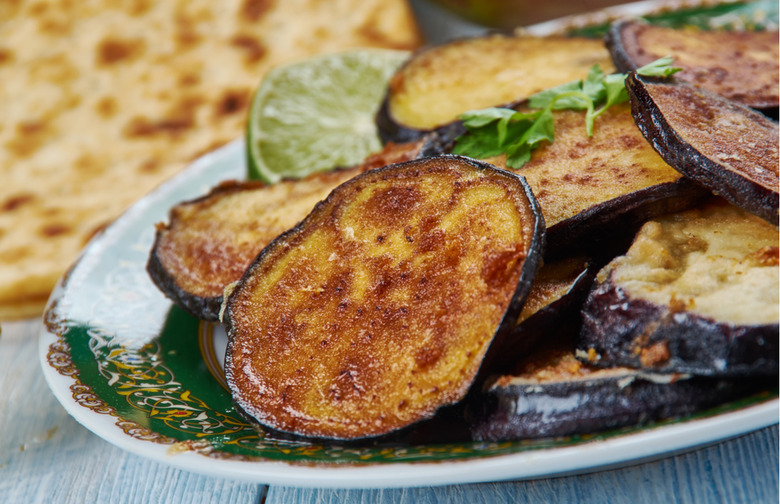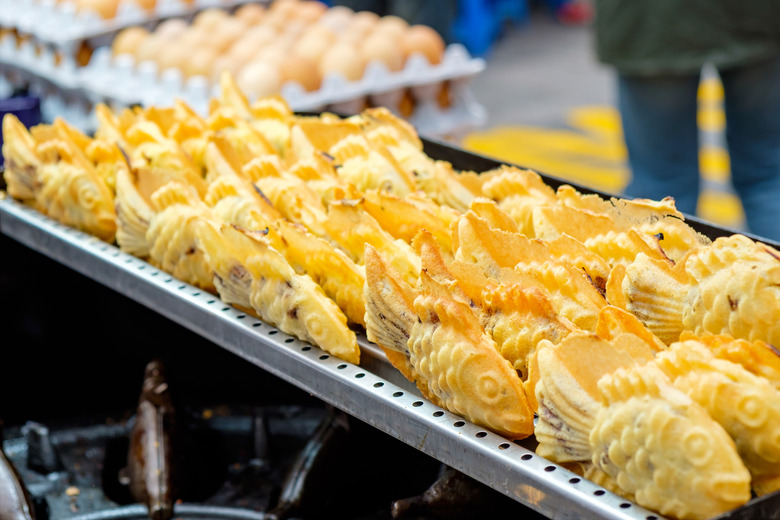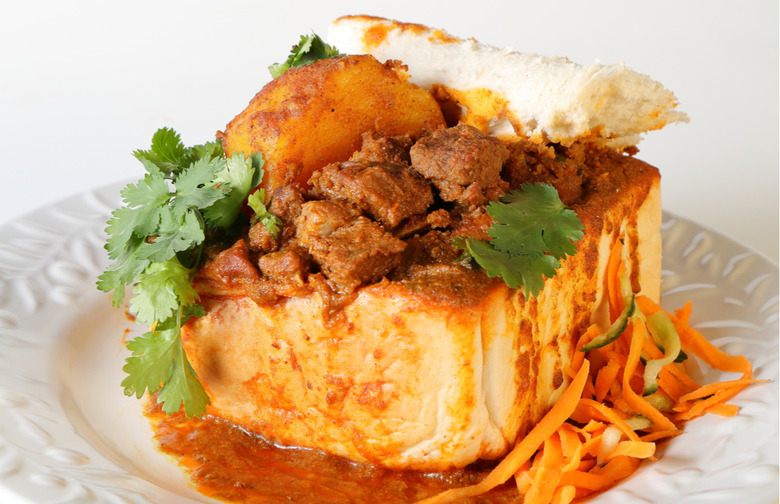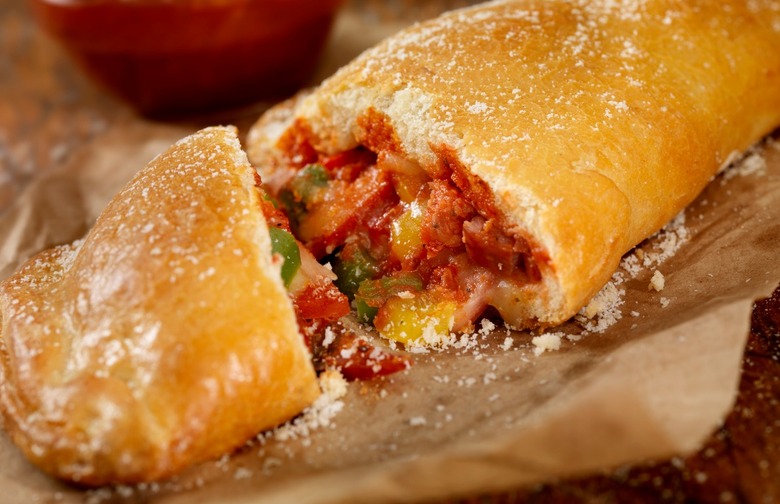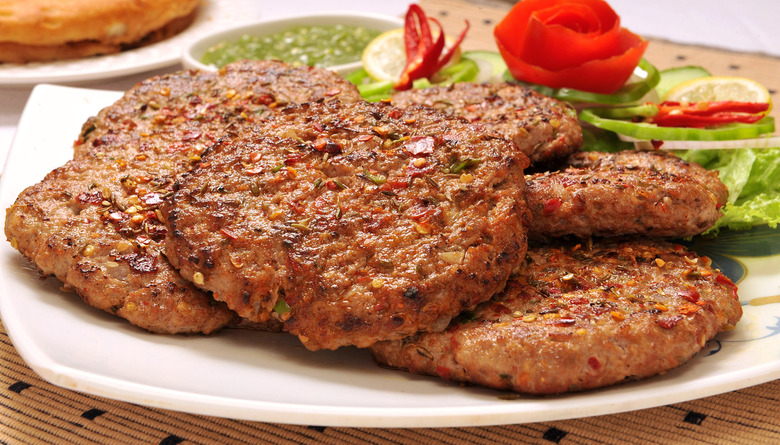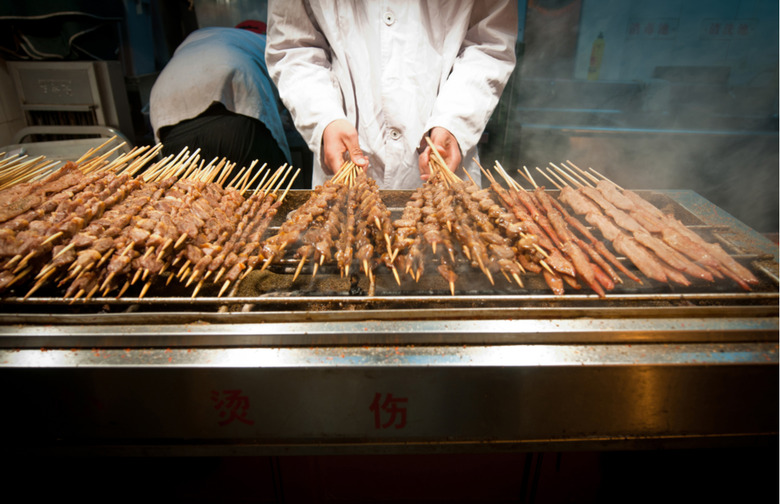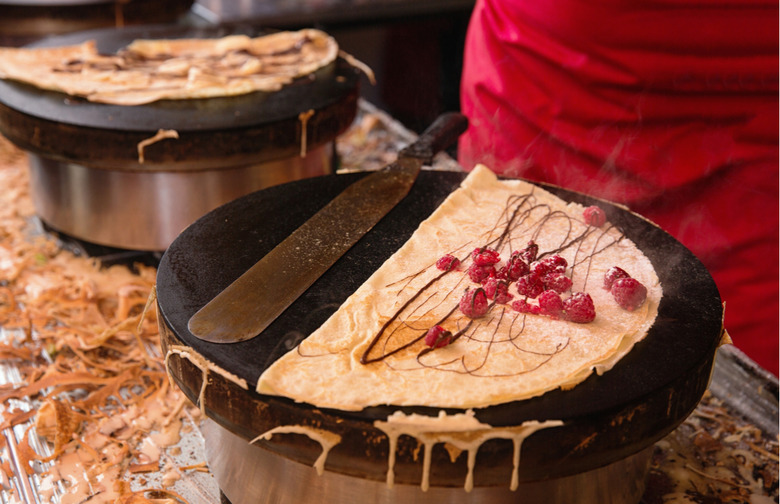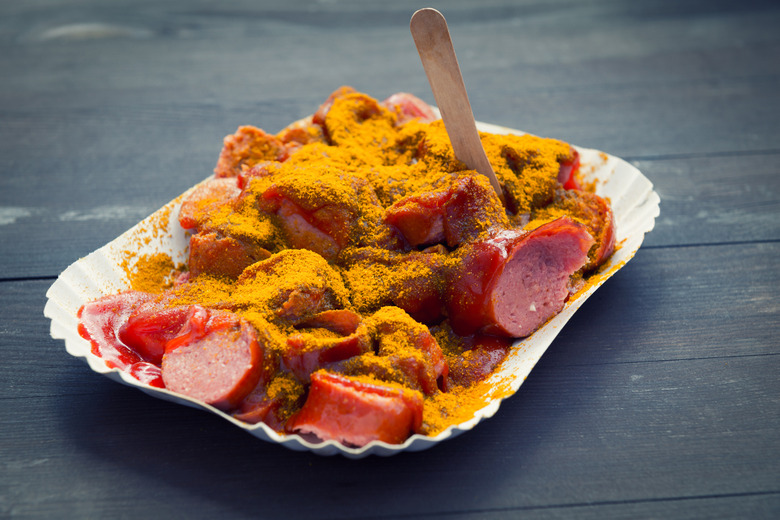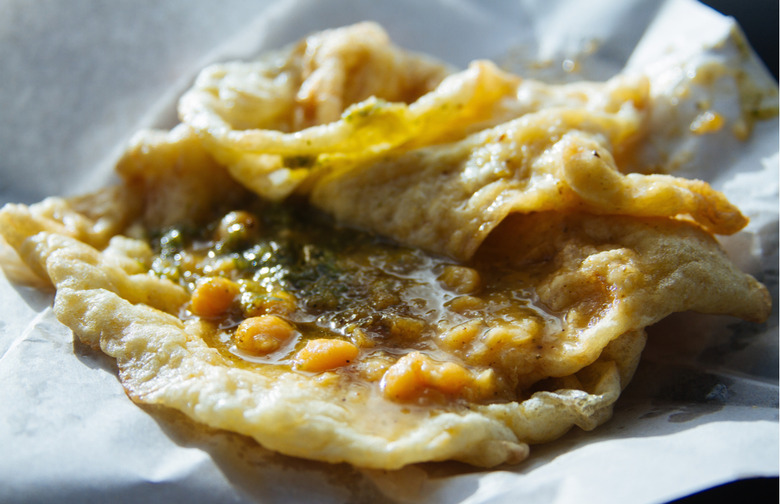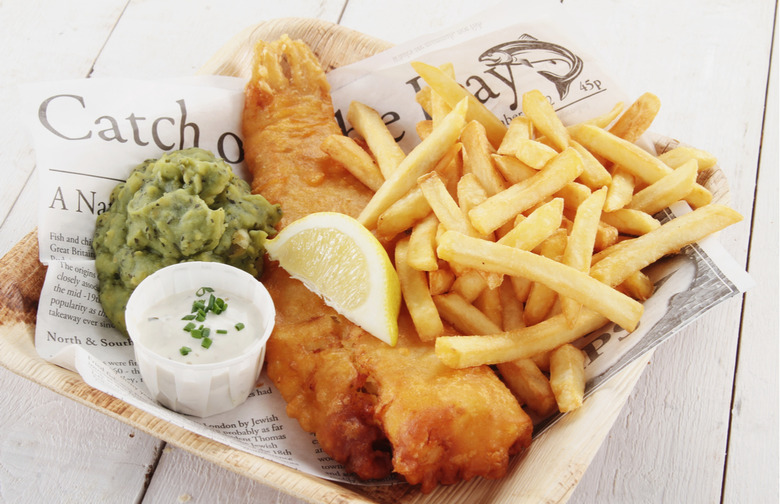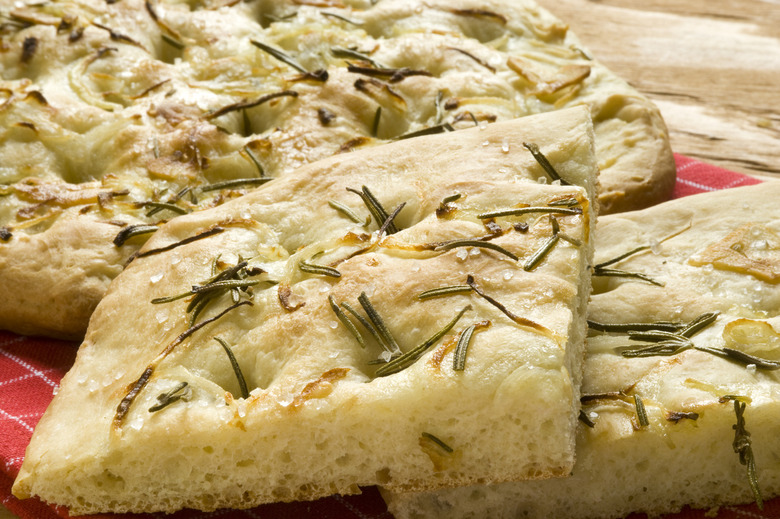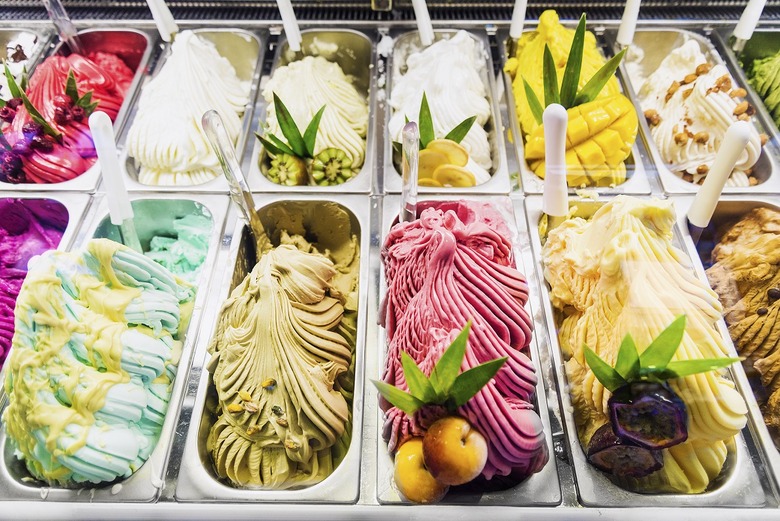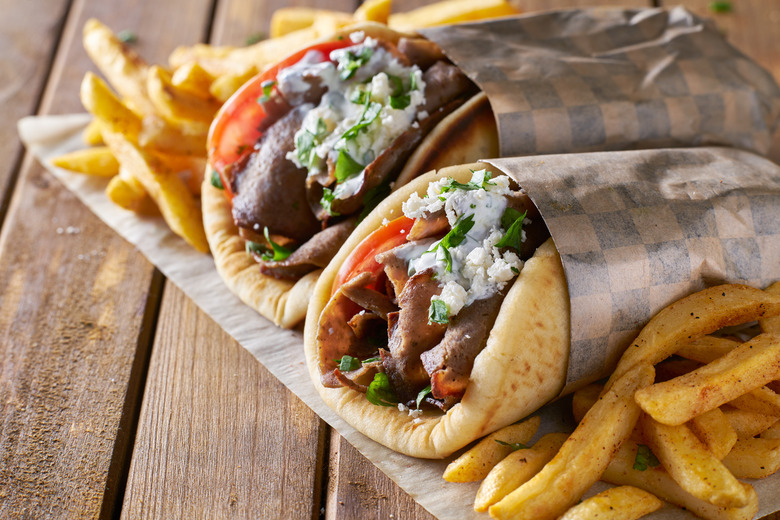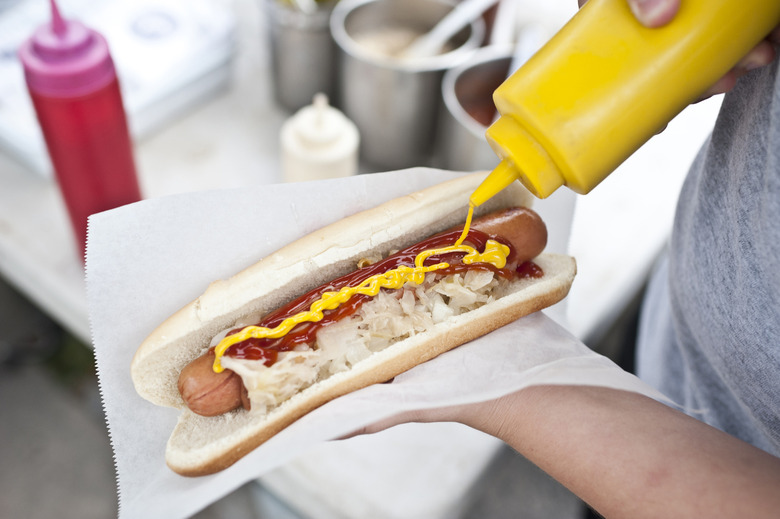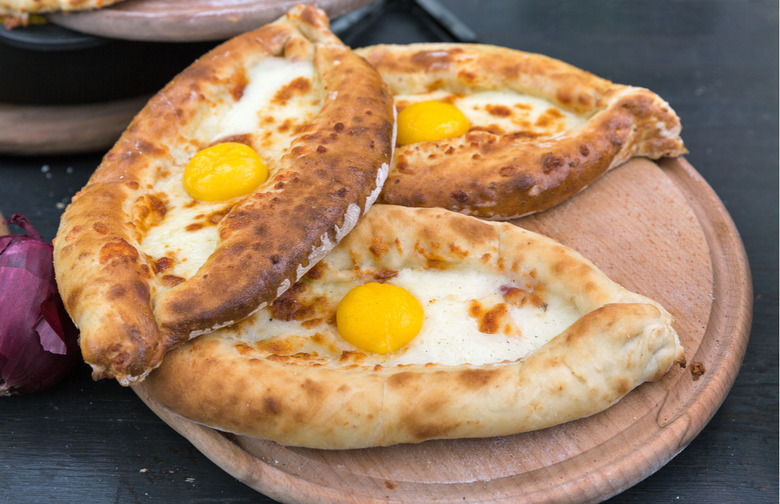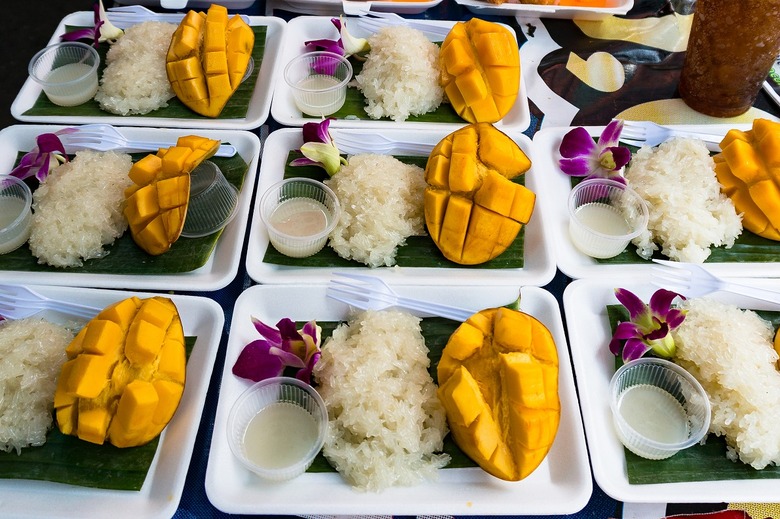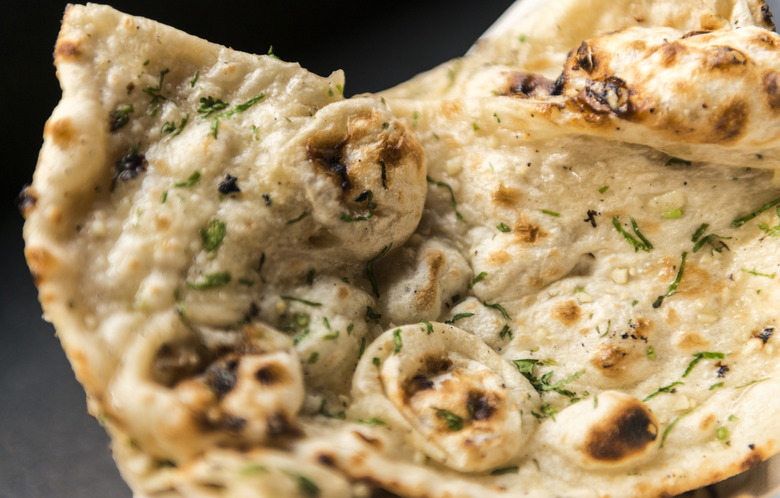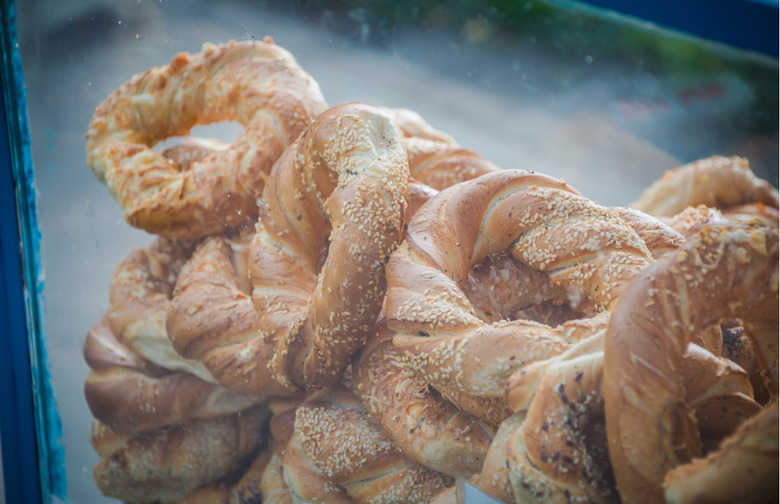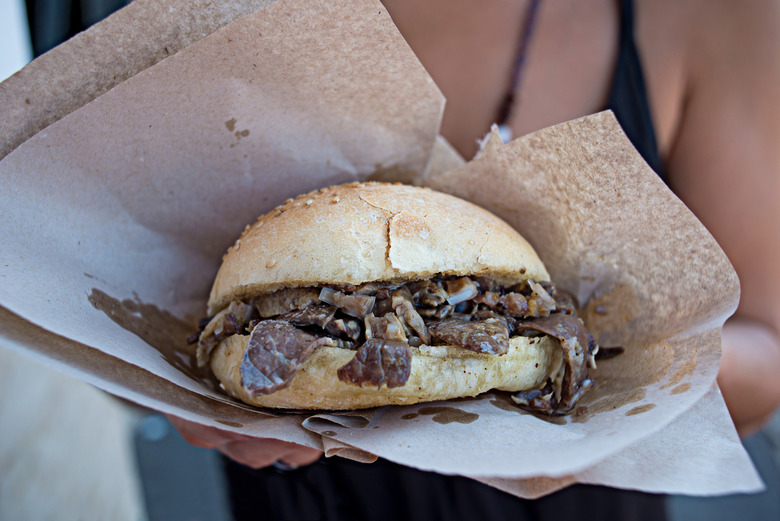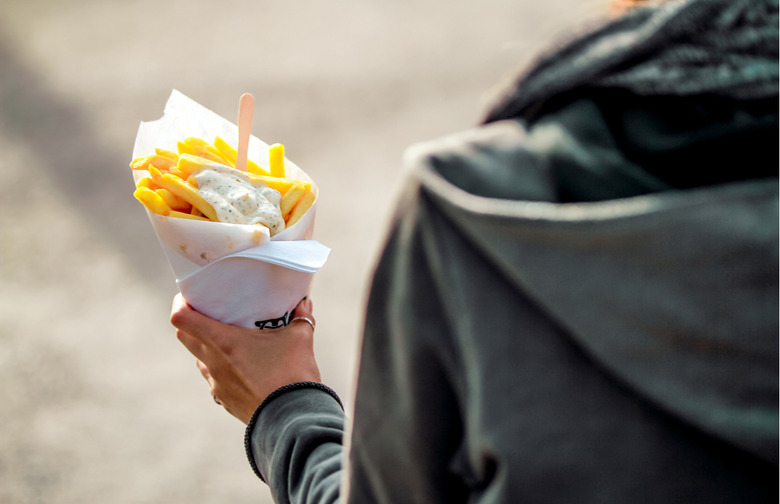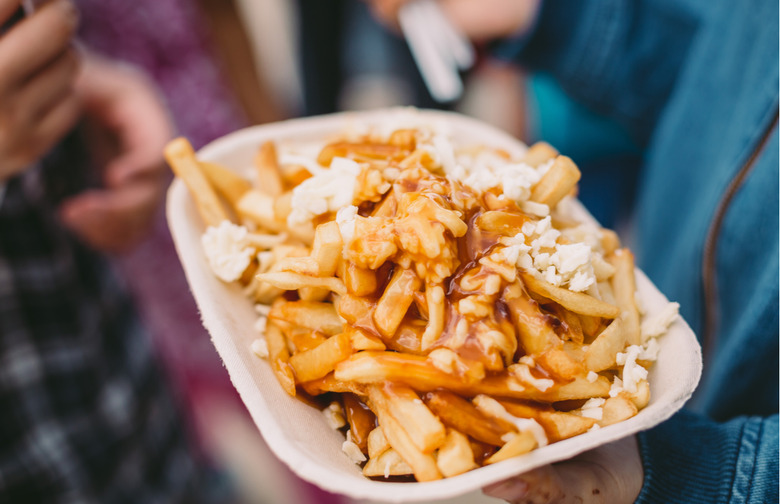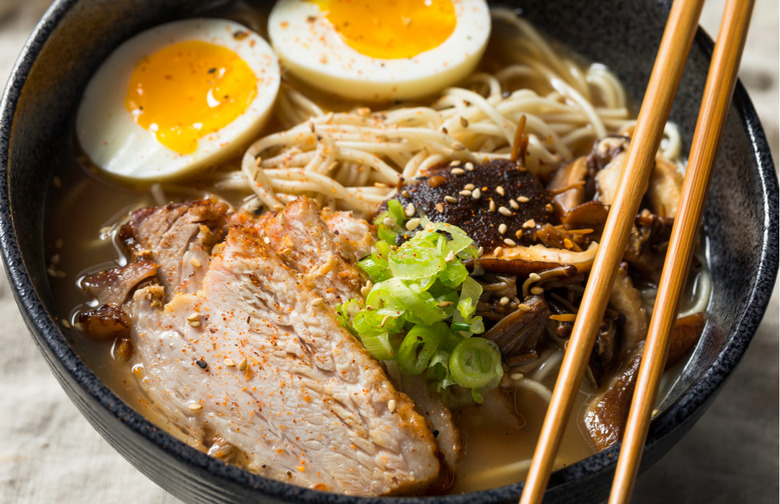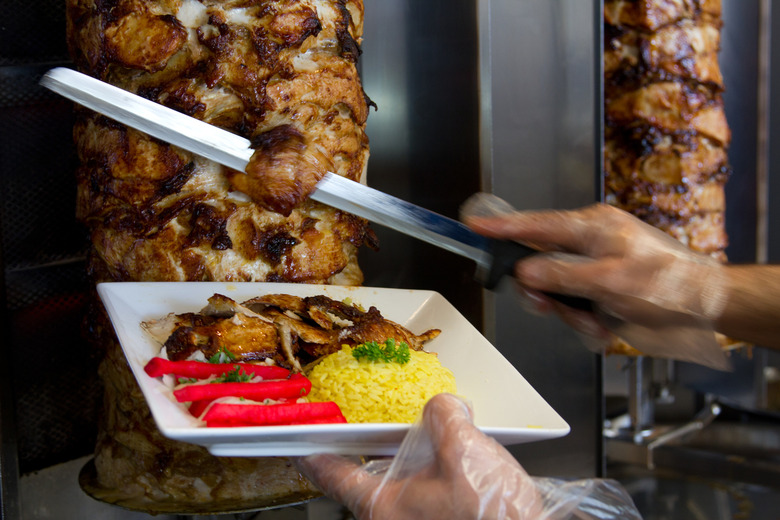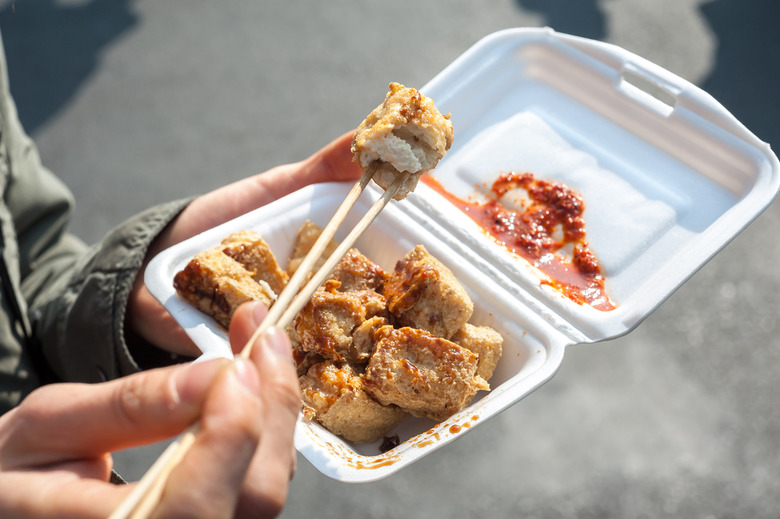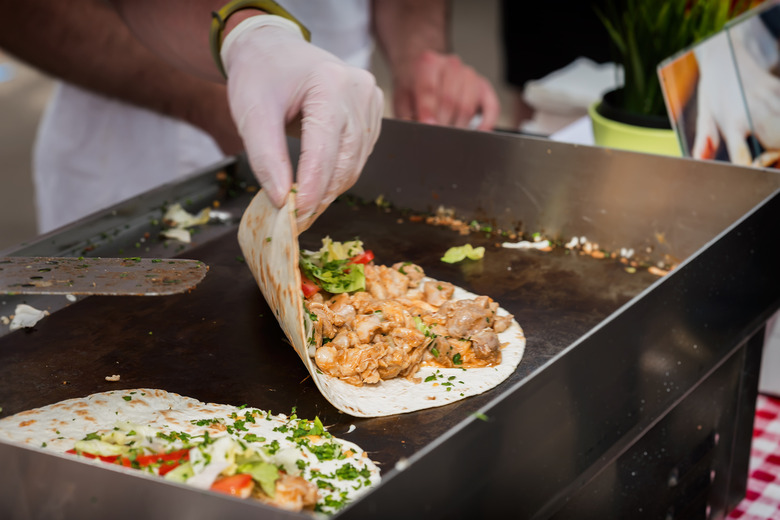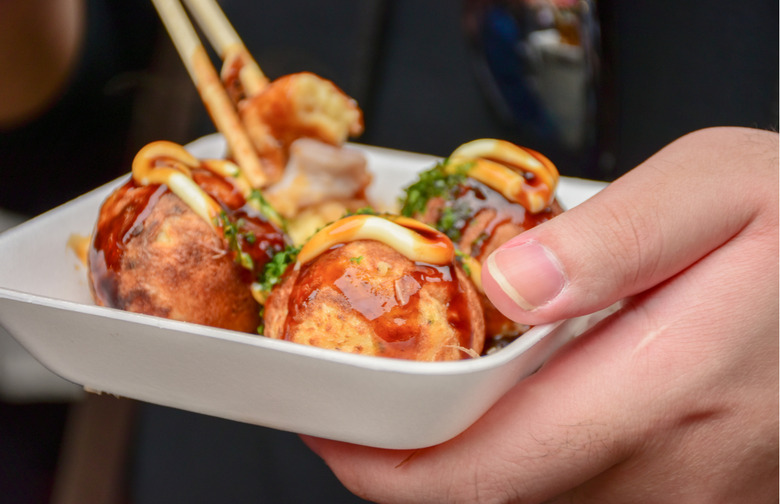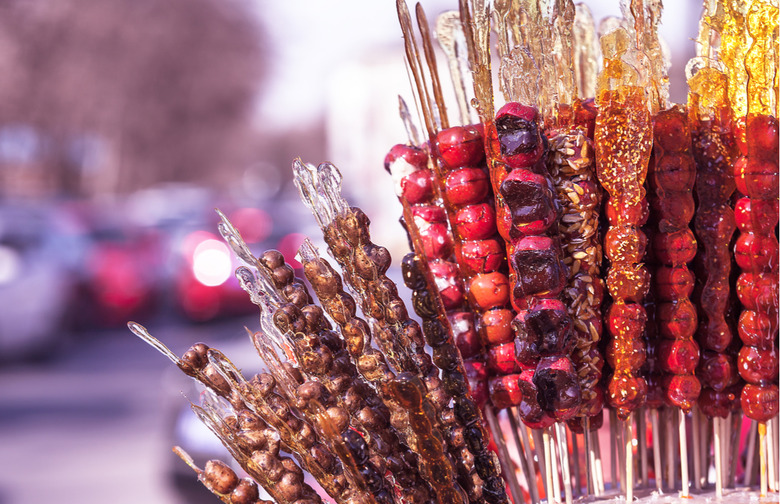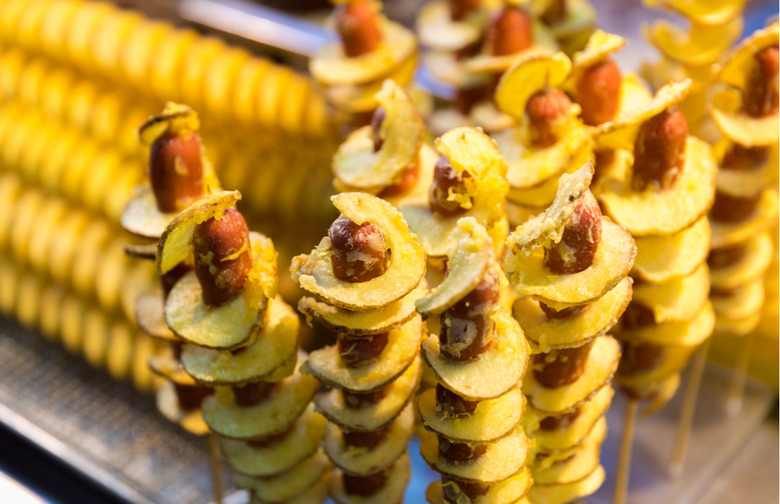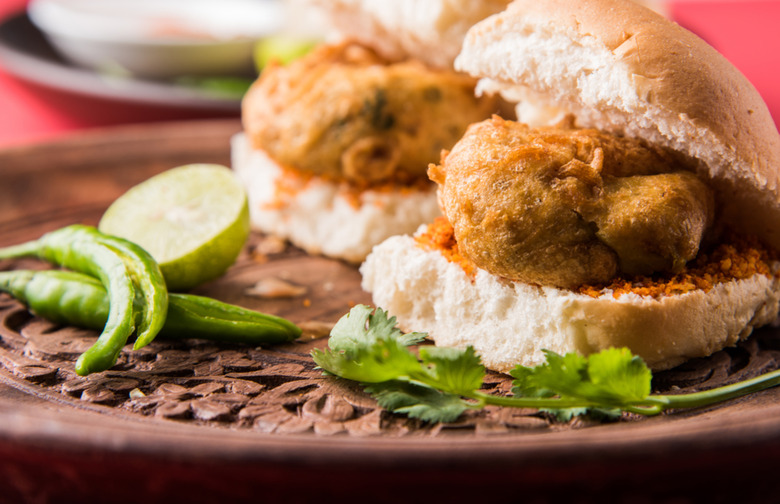35 Iconic Street Foods Every World Traveler Must Try
Food is an absolutely vital part of the travel experience. The key to understanding a place's culture and history often lies in its cuisine. While many globetrotters choose to do this by booking a table at a popular tourist trap restaurant, we believe that in order to find the best food in a new place, one often has to take to the streets.
Not only is eating street food an easy and inexpensive way to fill your stomach, but it also opens the door to a whole world of utter deliciousness. From stainless steel push carts and dubious-looking night market stalls to kiosks and the backs of bicycles, you'll often find that the best local cuisine is being made by a local on the street rather than a big-name chain or celebrity-helmed restaurant. From the all-American hot dog to Sicily's spleen sandwich, every world traveler must try these 35 iconic street foods.
Aloo chaat (South Asia)
Aloo chaat, a dish made with pieces of boiled and fried potatoes mixed with spices and chutney, is popular throughout South Asia, but particularly so in Pakistan and northern India, as well as parts of the Indian province of West Bengal and the Bangladeshi region of Sylhet. Eaten as a snack, a side dish or a light meal, aloo chaat can vary by region in terms of specific spices and chutneys used.
Anticucho (Peru)
Anticuchos are a kebab-like street food found in Peru that can consist of any kind of meat but are most popularly made of beef heart. The meat is marinated in vinegar and spices such as garlic, cumin and ají pepper before being roasted on a skewer, the meat pieces alternating with vegetables such as peppers, onions, mushrooms and carrots. Seasoned with salt, as well as sometimes vinegar or lemon juice, anticuchos are usually served with a traditional sauce made with garlic, cilantro, onion, lemon juice, beer and vinegar, as well as a piece of bread or a boiled potato.
Arepa (Colombia and Venezuela)
Arepas are a staple in the Colombian and Venezuelan diets. These soft, thick patties are made with either ground maize kernels, maize flour or maize meal, which is then mixed with water and salt, as well as sometimes butter, eggs, milk or oil. Baked, boiled, fried, grilled or steamed, arepas can vary in size, flavor and color, and very often are stuffed or topped with meat, cheese, eggs, tomatoes or salad, or even eaten plain as a side to a meal. Arepas can also be split to serve as the bread of a sandwich, and are often served with cheese, avocado, or cuajada a type of milk curd.
Asinan (Indonesia)
Asinan is an Indonesian street food made up of either fruits or vegetables that have been pickled, brined or vinegared. The most popular types of asinan (a word that means "salty food") are asinan Betawi and asinan Bogor. A specialty of the Betawi people from Jakarta, asinan Betawi is made up of preserved Chinese cabbage, other cabbage, tofu, lettuce and bean sprouts served in a hot peanut and vinegar sauce with peanuts and krupuk (a type of deep-fried cracker) on top. Asinan Bogor, on the other hand, originates from the city of Bogor and consists of preserved fruits, such as pineapple, raw mango, water apple, papaya and more, which are served in a sweet yet hot-and-sour vinegar and chili sauce and also topped with peanuts.
Banana cue (Philippines)
In the Philippines, banana cue is a very popular street food made with saba bananas, a variety of banana popular for cooking in the island nation. The bananas are deep-fried and coated in caramelized brown sugar before being skewered on bamboo sticks.
Banh mi (Vietnam)
The banh mi came about as a result of the introduction of the baguette to French-occupied Vietnam in the 19th century. The French bread became a staple at the Vietnamese dinner table by the early 20th century, and by the 1950s, the banh mi had appeared in the streets of Saigon (now Ho Chi Minh City). The sandwich is made with Vietnamese baguette — a thin, airy wheat or rice-flour bread with a thin crust — and will consist of one or more meats such as pork belly, grilled chicken, Vietnamese sausage, pork liver pate or canned sardines in tomato sauce. Vegetables are also usually added, such as cucumber, cilantro, pickled carrots and white radishes, and condiments like spicy chili sauce, mayonnaise and Maggi seasoning sauce are common. Today, banh mi stands are ubiquitous in Vietnam and have also become popular in many cities around the world where Vietnamese communities have settled.
Beguni (Bangladesh and West Bengal, India)
Made of sliced eggplant that is battered and then fried or deep-fried in oil, beguni is a Bengali snack found in Bangladesh, as well as the Indian province of West Bengal. Served with rice, it is a popular street food in the cities of Bangladesh throughout the year, as well as a Ramadan staple in many Bengali Muslim households throughout the Indian subcontinent.
Bungeo-ppang (South Korea)
Commonly found on the streets during the winter season, bungeo-ppang is a Korean pastry made in the shape of a fish and filled with red bean paste. Wheat flour, baking powder and water (or milk), as well as sometimes eggs, are mixed together to make the batter, which is then poured into a bungeo-ppang grill, an appliance with a fish-shaped mold that is reminiscent of the waffle iron. The sweetened red bean paste is then added before pouring more batter on top and closing the mold until the pastry comes out golden. In addition to the red bean paste, bungeo-ppang can also be found with pastry cream, chocolate and even pizza toppings among other fillings.
Bunny chow (South Africa)
Often referred to as simply a "bunny" by locals, bunny chow is a South African street food that originated with the Indian community in the city of Durban. A bread loaf is hollowed out and then filled with curry, usually mutton, lamb, chicken or bean. The dish, which is traditionally eaten by hand, is also usually accompanied by a side of salad made up of grated carrots, onion and chili.
Calzone (Italy)
Calzones are actually folded over pizzas and were invented in Naples, like the pizza itself. Made with salted bread dough that is stuffed with ham, salami or vegetables, as well as mozzarella, ricotta and Parmesan or pecorino cheese, calzones are baked in the oven. Regional varieties across Italy exist, with ingredients including typical pizza toppings as well as foods such as eggs or potatoes. While a calzone can be quite a large meal, Italian street vendors often sell them in a smaller size that can easily be eaten on the go.
Chapli kebab (Pakistan)
A flat and round kebab usually made of ground beef or mutton, the chapli kebab has its origins in the northwestern Pakistani city of Peshawar. Ingredients such as wheat flower, eggs, onions, tomatoes, ginger, coriander, green chilies and spices such as garam masala and chili powder are mixed in with raw minced meat before being molded into a round shape and either fried or deep-fried. Popular throughout Pakistan, chapli kebabs are also eaten in India and eastern Afghanistan, served with naan, with rice or in a bun or sandwich bread alongside chutney, salad or yogurt.
Chuan (China)
One doesn't normally associate kebabs with Chinese food, but that's exactly what chuan are. Small pieces of skewered meat, spiced with black pepper, cumin seeds, red pepper flakes or sesame, are roasted over charcoal or electric heat or deep-fried in oil. Although popular throughout China, chuan (also called chuan'r) originate from the Uighur people and other Chinese Muslims, who have their own distinct cuisine.
Crepe (France)
Originating in the French region of Brittany, crepes are a popular thin, pancake-like pastry popular throughout France, as well as Canada and Belgium. You'll also find the crepe has quite the following throughout Europe, North Africa and southern South America, as well as the United States. Made with all kinds of fillings, there are two types of crepe: sweet crepes (crêpes sucrées), made with wheat flour and typically eaten for breakfast or dessert, and savoury galettes (crêpes salées), usually made with buckwheat flour (known as galette). Sweet crepes are commonly made with Nutella, custard, fruit spreads or sliced fruits, whipped cream or syrup and then dusted with powdered sugar or fresh fruit. If you're going for the more savory type, popular fillings are cheese, eggs, artichoke, ratatouille, mushrooms and all kinds of meat.
Currywurst (Germany)
German sausages can put American hot dogs to shame, and the currywurst in particular is iconic. Pork sausage is steamed, fried and then usually cut into slices before being seasoned with curry ketchup, a type of spiced ketchup and then curry powder. Usually served with fries, you can find it all over Germany, with some variations across the country.
Doubles (Trinidad and Tobago)
Doubles is one of the most common and best street foods you'll find on the twin islands of Trinidad and Tobago. The snack is a clear legacy of the influence of the country's large ethnically Indian population; it's made with two baras — a flat fried bread that is a variation of the Indian vada — and that are filled with curry channa (chickpeas), a food that is popular in South Asian cuisine. Many enjoy topping the delicious street snack with condiments such as tamarind, pepper sauce, cucumber or mango.
Fish and chips (England)
Fish and chips is one of the most quintessentially British foods today, but its roots lie elsewhere in Europe. Chips, or french fries, originated in France or Belgium, and fried fish was introduced to Britain by way of Portugal and Spain. Enterprising Brits decided to serve battered cod or haddock and chips together in the mid-1800s. Sprinkled with salt and vinegar, it's also often served with a side of mushy peas, curry sauce, gravy or ketchup. Traditionally, fish and chips were wrapped in old newspaper, but nowadays grease-proof paper (sometimes with faux newspaper print) is used. One of the few foods not rationed during World War II, fish and chips are beloved throughout the United Kingdom and English-speaking commonwealth nations such as Australia and New Zealand. You can also find some amazing fish and chips spots in the U.S.
Focaccia (Italy)
Focaccia is a type of Italian bread made out of high-gluten flour, oil, salt, water and yeast. Rolled or pressed into a thick layer, focaccia is traditionally baked in a stone-bottom or hearth oven, and its distinctive texture comes from the common practice of poking the bubbles forming in the bread. Olive oil is spread on the dough before rising and baking, as well as after in order to season it along with salt. Focaccia is often topped with herbs and other ingredients, such as cheese or onion. It can be served as an appetizer, side, snack or sandwich bread.
Gelato (Italy)
While gelato is the Italian word for ice cream, what some people may not realize about Italian gelato is that is quite different from ice cream. Made with milk, cream and sugar and then flavored with nuts, fruit or other flavorings, gelato is much lower in fat than traditional American ice cream. By Italian law, it must be made of 3.5 percent butterfat (as opposed to the 10 percent butterfat dictated for ice cream by American law). You'll also find that gelato has more flavor and less air whipped into it than ice cream, giving it a richness that has made it popular throughout Italy as well as the rest of the world.
Gyro (Greece)
A gyro is a Greek meat preparation in which the meat — traditionally lamb, chicken, or pork — is cooked on a vertical rotisserie and then sliced off to be served in a wrap of flatbread (usually pita) filled with tomatoes, onions and tzatziki sauce, as well as sometimes fries. Gyro meat, which can also be made of beef or veal, is usually spiced with paprika, garlic powder, oregano, pepper and dried parsley, as well as sometimes cinnamon, cumin, nutmeg and sumac among other spices.
Hot dog (United States)
There's no American street food as classic as the hot dog, and you can find it on the menu at many restaurants, convenience stores, and stadiums in addition to hot dog stands and food trucks in big cities like Chicago, Detroit and New York, all of which are particularly well-known for their hot dog culture. A grilled or cooked sausage is served on a steamed hot dog bun and garnished with whatever the eater pleases, ketchup, mustard, relish, onions, coleslaw, cheese and chili being some of the most common condiments. Variations in preparation and condiments differ by region, and you'll find some of America's best hot dogs scattered throughout the country.
Khachapuri (Georgia)
The national dish of Georgia, khachapuri is a cheese-filled bread with many variations throughout the country. Leavened bread, shaped in different ways, is filled with cheese (usually sulguni, a Georgian variety) in the middle and the crust of the bread is ripped off and dipped into it. Eggs are also commonly used as a filling. Khachapuri is popular in many other post-Soviet states, particularly Russia and Armenia, as well.
Mango sticky rice (Thailand)
Mango sticky rice, or khaoniao mamuang as it's called in Thai, is a popular Thai dessert that is also prevalent in other Southeast Asian countries such as Cambodia, Laos and Vietnam. Sticky steamed rice is mixed with coconut milk that has had salt and sugar added to it and then set so that the rice absorbs the milk. The rice is then served with some mango slices on top or on the side, and more coconut milk is then drizzled over it. The dish is particularly popular during April and May, summer months in Thailand as well as peak season for mangoes.
Naan (South and Central Asia, Middle East)
Originating in the Indian subcontinent and Central Asia, naan is a type of bread traditionally associated with Indian and Pakistani cuisine but is found throughout Central and South Asia, as well as the Middle East. Made with wheat flour, water and traditionally ghee (but sometimes butter), as well as sometimes yogurt or milk, naan is traditionally cooked in a tandoor oven. Brushed with ghee or butter and served hot, the flatbread is meant to be used to scoop up other foods, particularly curries, although it can have a filling as well.
Obwarzanek krakowski (Kraków, Poland)
A braided bread made in the shape of a ring, obwarzanek krakowski is boiled and sprinkled with poppy seeds, sesame seeds and salt before it is baked until it is crunchy on the outside but still chewy and moist on the inside. It's an extremely popular street snack in Kraków, the Polish city where it originated, but can also be found in shops and bakeries.
Pani câ mèusa (Palermo, Italy)
Pani câ mèusa is a sandwich that is almost exclusively found in the Sicilian capital of Palermo, where it is mostly sold in the main markets of the city. Its name literally means "bread with spleen" in Sicilian, and it is made by boiling chopped calf's lung and spleen before frying it in lard and then nestling it between two slices of a soft white bread called vastedda that is flavored with sesame. When served with caciocavallo or ricotta cheese, it is called "maritatu," or married, and when it is served without any cheese, it's referred to as "schettu," or single.
Pommes frites (Belgium)
Ubiquitous in Belgium are pommes frites, or what we know as french fries. There's quite a bit of dispute between France and Belgium as to which country invented this beloved and delicious snack, but we can say the Belgians definitely know what they're doing with their fries. Fried twice and served fresh in a paper cone, the piping hot, crispy-on-the-outside, chewy-on-the-inside Belgian fries are served with an impressive variety of Belgian sauces in addition to the expected ketchup and mayonnaise.
Poutine (Quebec, Canada)
Originating in the predominantly French-speaking province of Quebec, poutine is a classic Canadian street food of french fries topped with cheese curds and brown gravy. While easily found on the street, poutine is also found on the menus of many restaurants in Canada — even some locations of chains such as McDonald's, Burger King, Wendy's and KFC. Many variations of poutine exist, and the dish can include meats such as bacon, chicken, sausage or Montreal-style smoked meat. Poutine is so beloved that you'll even find it on the menu at some higher-end restaurants, albeit topped with things such as foie gras, truffle, caviar or three-pepper sauce.
Ramen (Japan)
Believe it or not, although ramen is a Japanese dish, many sources say that it actually originated in China. Modern-day ramen, however, is unquestionably associated with Japan, with nearly every region of the island nation having its own version. Chinese wheat noodles are served in a broth that is typically meat or fish-based, and soy sauce or miso is used as flavoring, as well as toppings such as a boiled egg, sliced pork, crispy duck, scallions or dried seaweed. Popular throughout the world, ramen can be found at street vendors in Japan, as well as ramen shops, karaoke halls, amusement parks and more. The Momofuku Ando Instant Ramen museum in Osaka is well worth a visit for ramen lovers, and you can even make your own instant ramen to take home.
Shawarma (Middle East)
A staple of street-side vendors and small shop owners, shawarma is an inexpensive meat dish popular throughout the Middle East. Similar to the gyro, lamb, chicken or other meats are stacked with layers of fat and placed on a vertical spit and grilled for hours. Once ready, vendors shave slices of the tender meat off the spit to be served as a wrap, typically in a pita, or on a plate. Shawarma is usually topped with ingredients such as hummus, tahini or amba (a mango pickle condiment) and eaten with cucumbers, tomatoes, tabbouleh or fattoush.
Stinky tofu (China, Hong Kong, and Taiwan)
While its unappetizing name comes from its pungent odor, this East Asian street snack is still quite popular. Chou doufu, or stinky tofu, is a fermented tofu originating from China, and preparation varies based on region or even the person making it. Generally, it is made by adding tofu to a brine made with fermented milk, meat and vegetables that sometimes also has Chinese herbs, bamboo shoots, amaranth greens, mustard greens and dried shrimp. The tofu can be left in the brine for up to several months, before being cut into cubes. Crunchy on the outside and soft on the inside, it can be eaten cold, steamed or stewed, but the most popular preparation is deep-fried. Usually topped with chili sauce and pickled cabbage, it can also be served in soup or on a skewer after being barbecued.
Tacos (Mexico)
This popular, utensil-free Mexican dish comes in many varieties, made up of a corn or wheat tortilla that is folded or rolled around a filling that can include beef, chicken, cheese, pork, seafood and vegetables and topped with avocado, chili pepper, cilantro, guacamole, lettuce, onions, salsa and more. Tacos are also widely consumed throughout Canada and the United States, with absolutely delicious varieties available in every state.
Takoyaki (Japan)
Takoyaki, battered golf-ball-sized fritters stuffed with octopus, are another popular street food in Japan. Made with a wheat flour-based batter and cooked in a pan especially made to shape the snack into a ball, the small, round treat is filled with diced or minced octopus, tempura scraps, green onion and pickled ginger. The takoyaki are then brushed with mayonnaise and takoyaki sauce (a sauce similar to Worcestershire) and then sprinkled with dried shavings of bonito (a type of fish) as well as green laver (a type of seaweed). The best place to try takoyaki is Osaka, where it is said that the snack was invented.
Tanghulu (China)
Tanghulu is another skewered street treat popular in China, although it is of the sweeter variety. Also called bingtanghulu, tanghulu is made of candied fruit on bamboo skewers. Usually consisting of Chinese hawthorn dipped in sugar syrup, tanghulu can also be coated in chocolate or sesame sprinkles as well, and other fruit variations have become more popular recently, such as bananas, blueberries, grapes, mandarin oranges, strawberries, pineapples and more.
Tornado potatoes (South Korea)
Tornado potatoes, or hoeori gamja as they're called in Korean, are a popular Korean snack that looks as amazing as it sounds. A whole potato is spiral cut on a skewer and then deep-fried before being brushed with seasonings such as cheese, honey or onion. It's a pretty simple snack, but you can also make things a bit more exciting by getting one with sausages spliced in between the spirals of potato.
Vada pav (India)
Vada pav, a spicy, deep-fried potato patty stuffed into a bread bun, is a street food staple across India. In order to make vada pav, a boiled and mashed potato is mixed with spices such as green chili, garlic, turmeric and mustard seeds, and then coated in batter made from gram flour before being deep-fried and put on a bun. Originating in Mumbai, it is also referred to as a "Bombay Burger" and is usually served with a green chili pepper and chutney. If you love the kind of spicy kick you get from foods like vada pav, you should also consider traveling the world to discover its spiciest foods.
More from The Daily Meal:
The 101 Best Restaurants in America
What Breakfast Looks Like in 50 Countries

